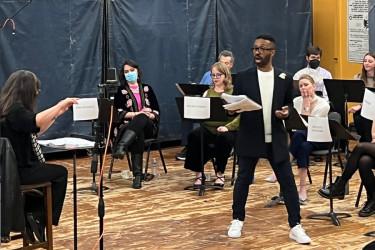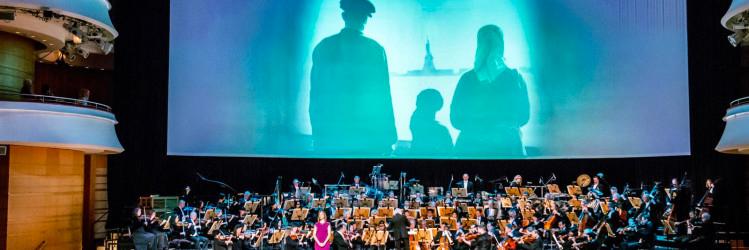 “It’s unusual to have five Twitter accounts. Especially if you’ve been dead for 170 years. But my great-great-great grandmother, Fanny Mendelssohn, was an unusual woman, and even today she inspires extraordinary passions.”
“It’s unusual to have five Twitter accounts. Especially if you’ve been dead for 170 years. But my great-great-great grandmother, Fanny Mendelssohn, was an unusual woman, and even today she inspires extraordinary passions.”
Fanny’s great-great-great granddaughter Sheila Hayman recently helped break some news about Mendelssohn that’s even more surprising than those five Twitter accounts. In an article for The Guardian, Hayman revealed that a masterpiece composed by Fanny is finally reaching the light of day after being lost for 150 years and then misattributed to her brother.
Hayman writes that Fanny and her younger brother Felix were inseparable. Not only did they learn composition together, they showed each other their new works before anyone else got to see them. But that kind of equality was doomed to change as they got older. Felix published some of her songs under his own name and discouraged her from publishing her own work.
 When Felix took off on a European adventure to hear and play music, Fanny had to stay home and get ready to marry a painter, Wilhelm Hensel, who’d fallen in love with her years before. Fanny hadn’t actually seen Hensel in almost a decade, but when he reappeared, he was a strong advocate for her own artistic expression. Hayman says Hensel refused to marry her great-great-great grandmother unless she kept composing: “every morning of their marriage, before he went off to paint, he would put a piece of blank manuscript paper on her music stand and tell her he wanted to see it filled up when he returned.”
When Felix took off on a European adventure to hear and play music, Fanny had to stay home and get ready to marry a painter, Wilhelm Hensel, who’d fallen in love with her years before. Fanny hadn’t actually seen Hensel in almost a decade, but when he reappeared, he was a strong advocate for her own artistic expression. Hayman says Hensel refused to marry her great-great-great grandmother unless she kept composing: “every morning of their marriage, before he went off to paint, he would put a piece of blank manuscript paper on her music stand and tell her he wanted to see it filled up when he returned.”
And fill those pages she did. She wrote her own wedding music after Felix fell down on his promise to do so. She wrote a “Cholera Cantata” after nursing her family through the disease. She eventually defied her brother and published a collection of her songs, including her piano trio. And in 1829, she wrote in her journal: “I played my Easter Sonata.” 140 years later, this Sonata would be discovered and Hayman calls it “a massive, complex, energetic and adventurous piece.”
A record producer found the manuscript in a Paris bookshop in 1970. Because it was signed “F Mendelssohn” he assumed it was by Felix.
Then in 2010, a young American musicologist heard the piece and thought it sounded more like Fanny. Plus, she knew that among Fanny’s other works was a bound volume missing 30 pages. She tracked down the record producer and asked to see the manuscript. He told her “It can’t be by Fanny. It’s a masterpiece … very masculine. Very violent”. But the manuscript had page numbers and they were the very same ones missing from Fanny’s bound volume.
On March 8th, International Women’s Day, the UK premiere of the Easter Sonata was broadcast live on Radio 3 from the Royal College of Music, London. This time, there was no doubt as to whom had written it — Fanny finally got her due.







